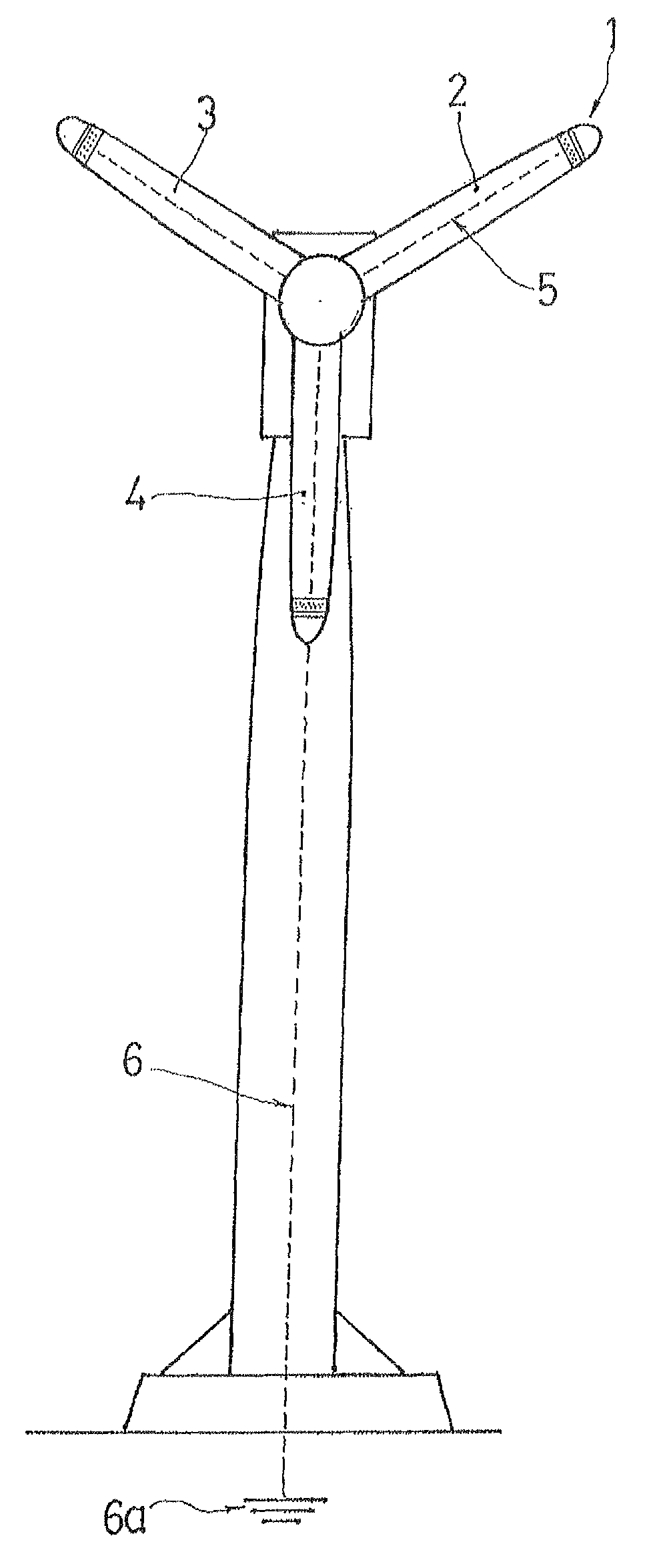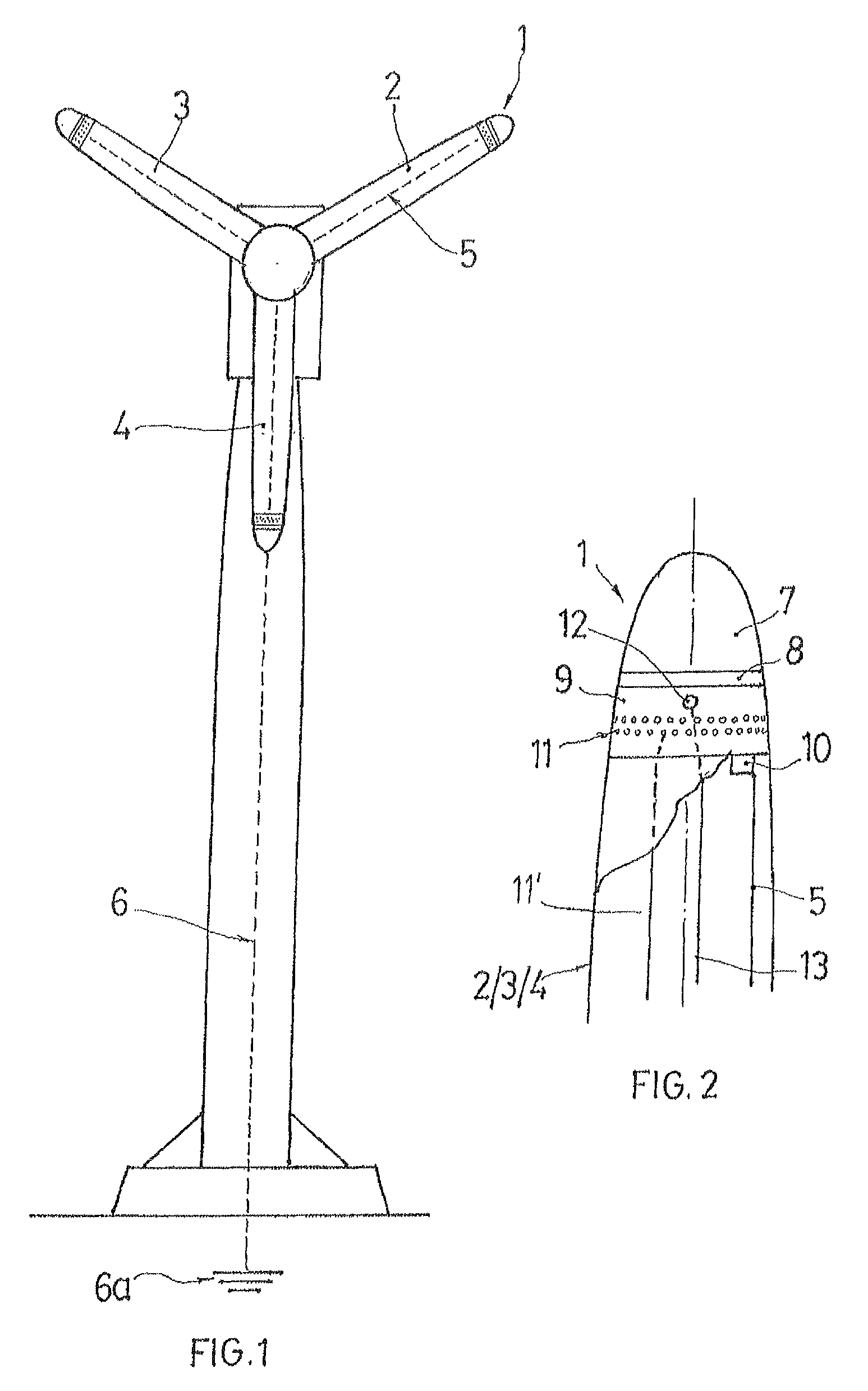Electrostatic charge de-ionizing lightning rod for protection of wind turbine generator blades and wind turbine generator with blades provide with electrostatic charge de-ionizing lightning rod
a technology of electrostatic charge and lightning rod, which is applied in the direction of wind motors, wind motor components, wind energy generation, etc., can solve the problems of blade loss, fire risk, and inability to guarantee a complete protection of people or facilities,
- Summary
- Abstract
- Description
- Claims
- Application Information
AI Technical Summary
Benefits of technology
Problems solved by technology
Method used
Image
Examples
Embodiment Construction
[0028]An electrostatic charge-ionizing lightning rod is identified as a whole with reference numeral 1. The de-ionizing lightning rod (1) is located on the tip of each of the blades (2, 3 and 4). With this location of the de-ionizing lightning rods (1), when the blades of the wind turbine are rotated, the lightning rods remain in the most salient area of a radius of rotation, or in other words of the radius of rotation of the blades (2, 3 and 4).
[0029]Each of the lightning rods (1) is connected through a corresponding conductor (5) to a conductor (6) or a ground circuit (6a) or to a grid of the ground circuit of a wind farm.
[0030]As shown in FIG. 2, the de-ionizing lighting rod (1) includes an exterior electrode (7), an isolating disc (8), and an interior electrode (9). A plurality of the isolating discs (8) can be located between the exterior electrode (7) and the interior electrode (9). The de-ionizing lightning rod (1) composed of the exterior electrode (7), the isolating disc / di...
PUM
 Login to View More
Login to View More Abstract
Description
Claims
Application Information
 Login to View More
Login to View More - R&D
- Intellectual Property
- Life Sciences
- Materials
- Tech Scout
- Unparalleled Data Quality
- Higher Quality Content
- 60% Fewer Hallucinations
Browse by: Latest US Patents, China's latest patents, Technical Efficacy Thesaurus, Application Domain, Technology Topic, Popular Technical Reports.
© 2025 PatSnap. All rights reserved.Legal|Privacy policy|Modern Slavery Act Transparency Statement|Sitemap|About US| Contact US: help@patsnap.com


